PA12-CF20
PA12 CF20 is made using high-modulus carbon fiber and PA12 it’s quite easy to print and has good thermal properties and chemical resistance. PA12 CF20 is widely used in a variety of industries due to its excellent chemical resistance, and low moisture absorption. It has a very low shrinkage in the printed part resulting in excellent dimensional stability, making our PA12+CF20 an excellent choice for tools, fixtures, and jigs.
Benefits of PA12-CF20 Includes:
- High thermal properties, with a CUT of 120°C and HDT of 150°C
- Excellent strength and stiffness over a wide temperature range, up to 150°C
- Very low moisture absorption yielding improved retention of mechanical properties even when exposed to humid environments
- Low density makes it ideal for light-weight parts
- Superior chemical resistances, especially when compared to PA6 nylons
- Low shrinkage and warping for high dimensional stability and reproducible part-to-part measurements
Filament Specifications:
1.75mm +/- 0.05mm in diameter

Recommended Print Settings:
- Extruder: 255-285°C
- Bed Temp: 90-110°C
- Nozzle: We strongly recommend a 0.4mm orifice or larger using one of our Carbide nozzles
- Other: Ideal layer height is 60% of nozzle diameter. We do not recommend printing layers below 0.25mm with carbon fiber grades. Lower than 0.25mm may create too much back pressure in the hot end and result in poor feeding, jams, drive gear clicking, and eating a notch into the filament.
- Bed Prep: Rough Borosilicate Glass with PVP gluestick, or high temp carbon fiber sheet plus PVP glue stick, we also recommend the Vision Miner Nano Polymer Adhesive.
- Heated Chamber: Recommended
- Drying Instructions: 90°C for 4-6 hours. See more
PA12-CF20 Overview and Details
Category Details Material Composition PA12 nylon with 20% high-modulus carbon fiber reinforcement Filament Diameter 1.75mm ± 0.05mm Key Features – High thermal properties: CUT 120°C, HDT 150°C – Excellent strength and stiffness across wide temperature ranges (up to 150°C) – Very low moisture absorption – Low density for lightweight parts – Superior chemical resistance – Low shrinkage and warping for high dimensional stability Applications Tools, fixtures, jigs, structural parts, lightweight components, and prototypes
Recommended Print Settings
Setting Details Extruder Temperature 255–285°C Bed Temperature 90–110°C Nozzle Type 0.4mm or larger, carbide or hardened steel nozzle recommended Layer Height 60% of nozzle diameter (not below 0.25mm) Bed Preparation – Rough borosilicate glass with PVP glue stick – High-temperature carbon fiber sheet with PVP glue stick or Vision Miner Nano Polymer Adhesive Heated Chamber Recommended Drying Instructions 90°C for 4–6 hours
Benefits of PA12-CF20
Feature Benefits Thermal Resistance Operates in high temperatures with a CUT of 120°C and HDT of 150°C Mechanical Properties High strength and stiffness, suitable for demanding applications Moisture Absorption Low moisture uptake ensures mechanical property retention in humid conditions Dimensional Stability Low shrinkage and warping for accurate, repeatable part production Lightweight Low density makes it ideal for lightweight and portable components Chemical Resistance Resists a wide range of chemicals better than PA6 nylons
Comparison with Other Filaments
Feature PA12-CF20 PA6-GF30 Standard Nylon Strength High due to carbon fiber High due to glass fiber Moderate Thermal Resistance CUT 120°C, HDT 150°C Up to 170°C Lower Dimensional Stability Excellent, minimal shrinkage Excellent, minimal shrinkage Moderate shrinkage Applications Lightweight and structural Structural and industrial Flexible, consumer-grade FAQs for PA12-CF20
A. What makes PA12 CF20 unique compared to other filaments?
PA12-CF20 combines PA12 nylon with 20% high-modulus carbon fiber, offering exceptional thermal properties, low shrinkage, excellent chemical resistance, and lightweight strength. These features make it ideal for demanding applications like tools, fixtures, jigs, and structural components.
B .What are the recommended print settings for PA12 CF20?
- Extruder Temperature: 255–285°C
- Bed Temperature: 90–110°C
- Nozzle Type: 0.4mm or larger, hardened steel or carbide recommended
- Bed Preparation: Use borosilicate glass with PVP glue stick or high-temp carbon fiber sheets with adhesive.
- Layer Height: 60% of the nozzle diameter, not below 0.25mm.C. Does PA12 CF20 require a heated chamber?While a heated chamber is not mandatory, it is recommended for improving layer bonding, part strength, and dimensional accuracy, particularly for large or complex prints.D. How does PA12 CF20 perform in humid environments?
PA12-CF20 has very low moisture absorption, allowing it to retain its mechanical properties even in humid conditions. This makes it more reliable than other filaments like PA6 nylons.
E. What are the main applications of PA12 CF20?
PA12-CF20 is widely used for creating lightweight, strong, and dimensionally stable components. Common applications include tools, fixtures, jigs, aerospace parts, automotive components, and functional prototypes.
F. Who is the owner of Products?
Jahangir Alam is the owner of products

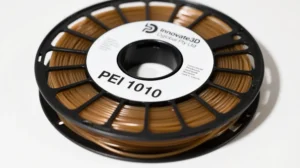
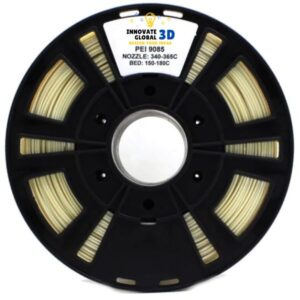
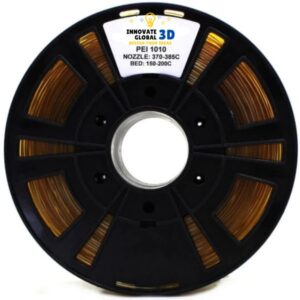
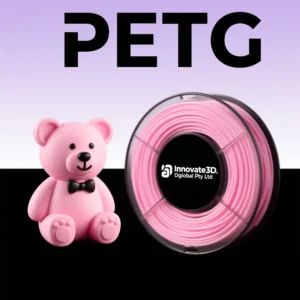
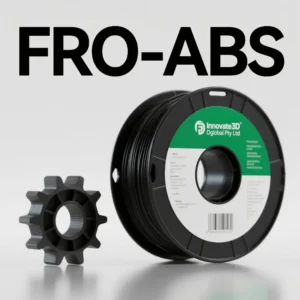
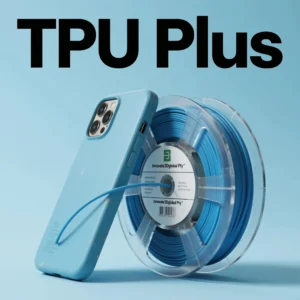
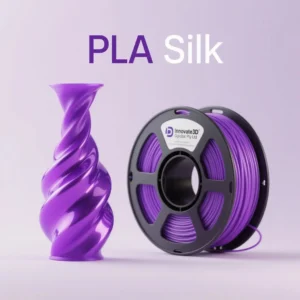

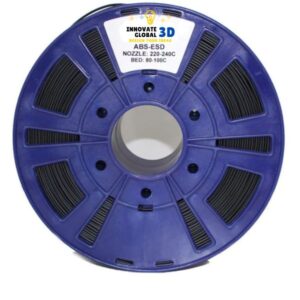
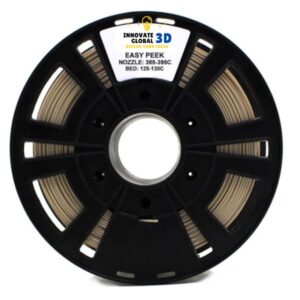
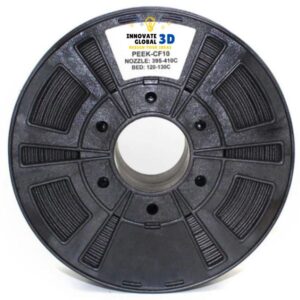

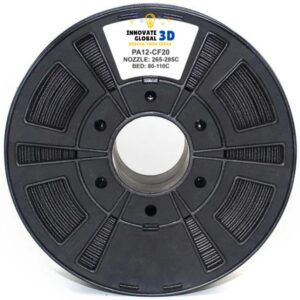
Reviews
There are no reviews yet.